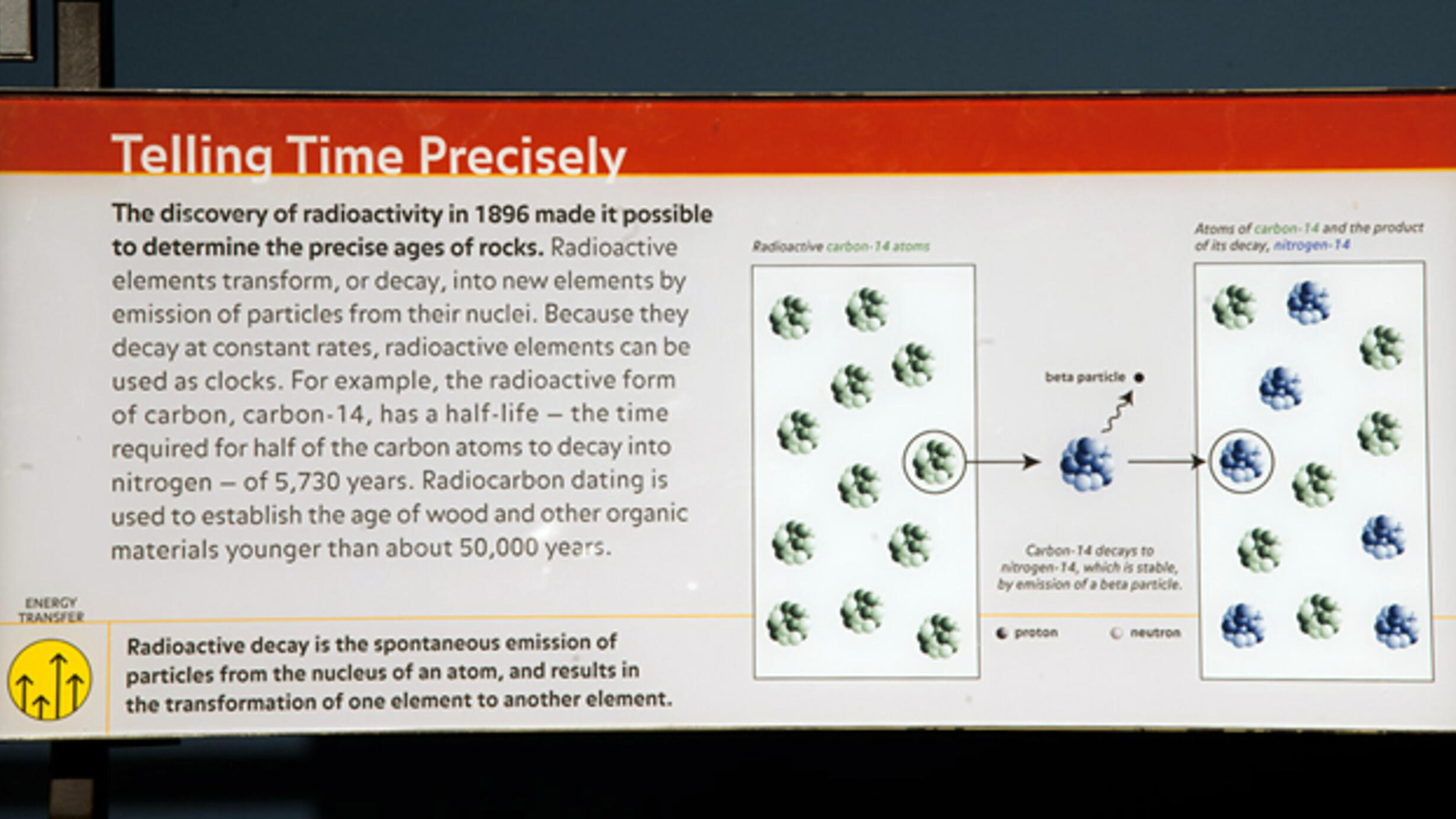Telling time precisely
Part of Hall of Planet Earth.
Part of Hall of Planet Earth.

The discovery of radioactivity in 1896 made it possible to determine the precise ages of rocks. Radioactive elements transform, or decay, into new elements by emission of particles from their nuclei. Because they decay at constant rates, radioactive elements can be used as clocks. For example, the radioactive form of carbon, carbon-14, has a half-life — the time required for half of the carbon atoms to decay into nitrogen — of 5,730 years. Radiocarbon dating is used to establish the age of wood and other organic materials younger than about 50,000 years.